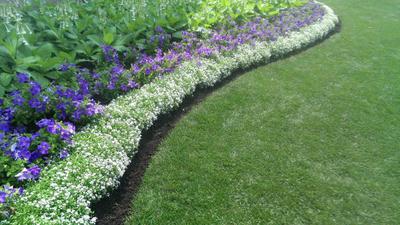Spring Lawn Tips
by Kevin
(Calgary, Alberta)

Spring lawn care tips with a focus on the differences between aerating, power raking and dethatching.
Every spring many people find themselves looking at their lawn wondering how they can help it recover from the stresses of winter and get ready for spring. Raking, watering, fertilizing, pre-emergent weed control and other short-term remedies are a great help. There are also other methods like aerating, dethatching, and power raking that improve the health of your lawn over the long term.
Do you know what they do, which one you should be using, and what the differences are between them? This is another frequently asked question, so this tips article will touch on these topics.
Both these methods are also great ways to prepare for reseeding, fertilizing and topdressing.
What is Aeration?
Aeration is the process of spiking, or removing small cores in the soil. This allows water and oxygen to penetrate further into the root system. Core aeration also helps to provide relief for compacted soil.
There are two main ways to aerate your lawn.
Spike Aeration
Spike aeration can be done with a variety of tools. Spike rollers, shoes, and other manual tools that require you to push the spikes into the soil. This will help to allow more oxygen and water to penetrate into the root system. However, spike aeration is not an effective method for relieving compacted soil.
You are not actually removing any soil with spike aeration. You are only compacting the soil between the spikes themselves (pushing it around). Spike aeration is better suited for sandy soils, or smaller areas that a large core aerator just won't manage.
Core Aeration
Core aeration actually removes small plugs from the soil that allow water and oxygen to penetrate the soil, but also relieve compaction.
Core aeration is like a mini composting system for you lawn. The cores are pulled from the soil and left to compost back into the ground. Once again, we refer to the quality of your soil. A soil high in microbes will also help to control the thatch you have in your lawn by breaking it down over time. (Like a good compost).
We take a more in-depth look at both of these methods including why, and when is the best time to aerate at the following link.
https://www.dream-yard.com/aerating-lawn.html
Dethaching
Dethatching is a method used to remove the layer of organic matter (roots, stems, debris) that builds up on the surface of the soil faster than it can decompose. Thatch build up creates a barrier that can prevent water and other nutrients from penetrating into the soil. It can also lead to pest and other lawn diseases.
Heavy thatch build up is an indicator that you should be reviewing your lawn care techniques. Proper lawn care and maintenance is the best defence against thatch build up (including topdressing).
Dethatching is also very stressful on a lawn as it can damage the root system. The severity depends on the type of grass and the method you use. We will touch on this below.
There are also two main ways to dethatch a lawn.
The difference between power raking and dethatching.
Both these methods can use the same vertical type mower and will remove thatch, but they are just a little different. The difference is in the tines. (However, we also understand that terminology can be a little different around the world.)
There are also other methods including dethatching rakes, and flexible tine attachments for lawn mowers, but they will not be as effective as a commercial grade vertical mower with steel tines.
I don't want to pass judgement on lawn mower attachments, but there have been claims about engine damage. It would make sense that it could put a lot of stress on the engine, especially for low horsepower mowers.
I have not personally seen this, but have read enough complaints that I wouldn't dispute it can happen. The claims may have become exaggerated over the years, but I would still consider it a risk.
Dethatching
Dethatching is a very specific method that uses “flail” type steel tines that actually “tear” into the thatch and the very top layer of soil depending on how high you set the machine. They are the most aggressive, and effective way to remove heavy amounts of thatch. This method is stressful on a lawn as it also damages a certain amount of the root system.
This is pretty much a “short term pain, for long term gain” scenario. Your lawn will recover and be happier for it.
Power Raking
Power raking still removes thatch, but there are other reasons it can be done. It is less aggressive and uses “knife like” tines that “slice”, rather than tear into the soil. There is far less damage done to the root system, but it is less effective than flail type tines at removing heavy thatch.
Most people that power rake should consider this for a spring clean up, reseeding a thin lawn, or improving the thickness of certain types of grasses.
Power raking with knife like tines is a method used to thicken lawns that spread by stolons. By slicing through the horizontally growing stems, you are increasing the amount of buds to produce more grass plants.
Timing is also important, but we have a full article on dethatching with more in depth information including why and when to consider this option at the following link.
https://www.dream-yard.com/dethatching-lawn.html
Hopefully you get a chance to visit the full articles. In the meantime, we hope you have a better understanding of these two very important lawn care methods.
Check out our time and money saving e-book
How to avoid the biggest mistakes made by DIYers, designers, and landscaping companies.
Visitor
Favorites
Giggles 'n' Thoughts






